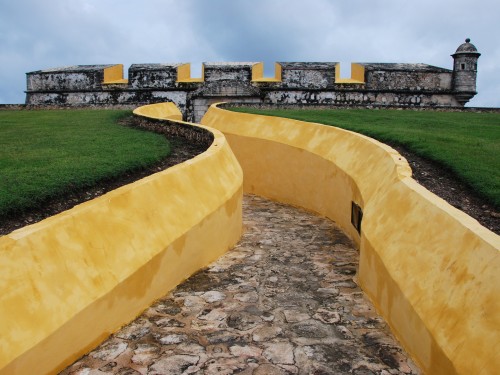Campeche begins to wake up. Gone are the years of glory when the state bore the emblem of the country’s energy power capital in the Gulf of Mexico. The fall in oil prices and the reduction in oil production collapsed the economy of a state that depended almost entirely on oil activity.
“It has not been easy to recover from the crisis, but we look to the future with optimism and we are focused on working hard,” says Jorge Enrique Manos Esparragoza, Tourism Secretary of Campeche.
Ciudad del Carmen was the most affected municipality in the state with the oil crisis that began in 2014, because it is the gateway to the Sonda de Campeche, an area where 70% of crude oil and 30% of natural gas were extracted.
To exemplify the magnitude of the crisis, the Cantarell field, located 85 km from Ciudad del Carmen and considered one of the most important in the world, went from producing more than 2 million barrels of oil per day to 200,000 bpd, according to figures from the National Hydrocarbons Commission (CNH).
Nobody thought of a plan b. Not the government, not the businessmen, not the people of Campeche, who for years depended on the production of “black gold” from the Sonda. The big mistake was to believe that the oil reserves were inexhaustible.
Despite efforts to attract new investments to the state that used to be a haven for pirates and a military stronghold centuries ago, the crisis made the state government began to look for other traditional industries to get the local economy back on its feet.
Today, the state government has set a very high goal: to turn Campeche into the new tourism jewel of Mexico.
“The work done by local entrepreneurs has to be acknowledged, now we all believe in the great potential this sector has”, said Manos Esparragoza.
The official explains that many of the businesses that depended directly or indirectly on the oil sector and which revenues have been depleted have been invited to join the tourism activity.
People who historically had dedicated themselves to activities related to oil extraction, are now venturing into sport fishing, while others have become coffee producers, just to give two examples”, said the Tourism Secretary.
“At present, there are more hotel openings than ever statewide, this is a sign that tourism is starting to bear fruit,” he added.
FROM OIL PRODUCER TO WORLD-CLASS TOURISM DESTINATION
Before the oil storm, Campeche was not a popular destination for entertainment and cultural activities. Today, it has managed to make its way with international events such as Ironman 70.3 (series of medium distance triathlon races); golf championships; Jazz festivals, gastronomic and cultural events, among others.
In addition, more tourist infrastructure has been developed that has given a modern face to the state, which was originally known to have great walls built between 1600 and 1700 to protect it from pirate attacks.
The tourism secretary shares that hotel occupancy, particularly in Ciudad del Carmen, has increased.
In 2016, the arrival of 952,000 visitors to the state was recorded, due to the complicated situation that the entity was going through, according to figures from the Ministry of Tourism (Sectur).
Last year, hotel occupancy grew 8.9%, to 1,000,370 visitors, who left an economic spill of more than 1.5 billion dollars.
Only 300,000 travelers arrived in the capital, equivalent to 29 % of the total number of tourists reported in 2017.
74 % of the visitors were national, while the remaining 26% were foreigners, of which 14% were from the United States. The economic spill of the Ironman 70.3 amounted to 50 million pesos last year and other conventions that were held in Campeche left more than 100 million pesos.
Although it may seem minor, the reality is that these figures have led Campeche to be above the national average, surpassing destinations such as Puerto Vallarta, Los Cabos and Cancun.
Until two years ago, the state was located in place 26, out of 32, of the most visited states. Today, it is in position 14.
“The model of economic development of the state is designed for a 30 year-period,” said the secretary of tourism, “but, in the next five or six years, it is sought to enter the Top 10 of the most visited tourist destinations in the country”.
“The goal is to turn Campeche into a reference in tourism, not only nationally, but globally”, Manos Esparragoza concluded.
TYT Newsroom with information from reporteindigo.com



